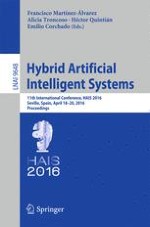2016 | Buch
Hybrid Artificial Intelligent Systems
11th International Conference, HAIS 2016, Seville, Spain, April 18-20, 2016, Proceedings
herausgegeben von: Francisco Martínez-Álvarez, Alicia Troncoso, Héctor Quintián, Emilio Corchado
Verlag: Springer International Publishing
Buchreihe : Lecture Notes in Computer Science
